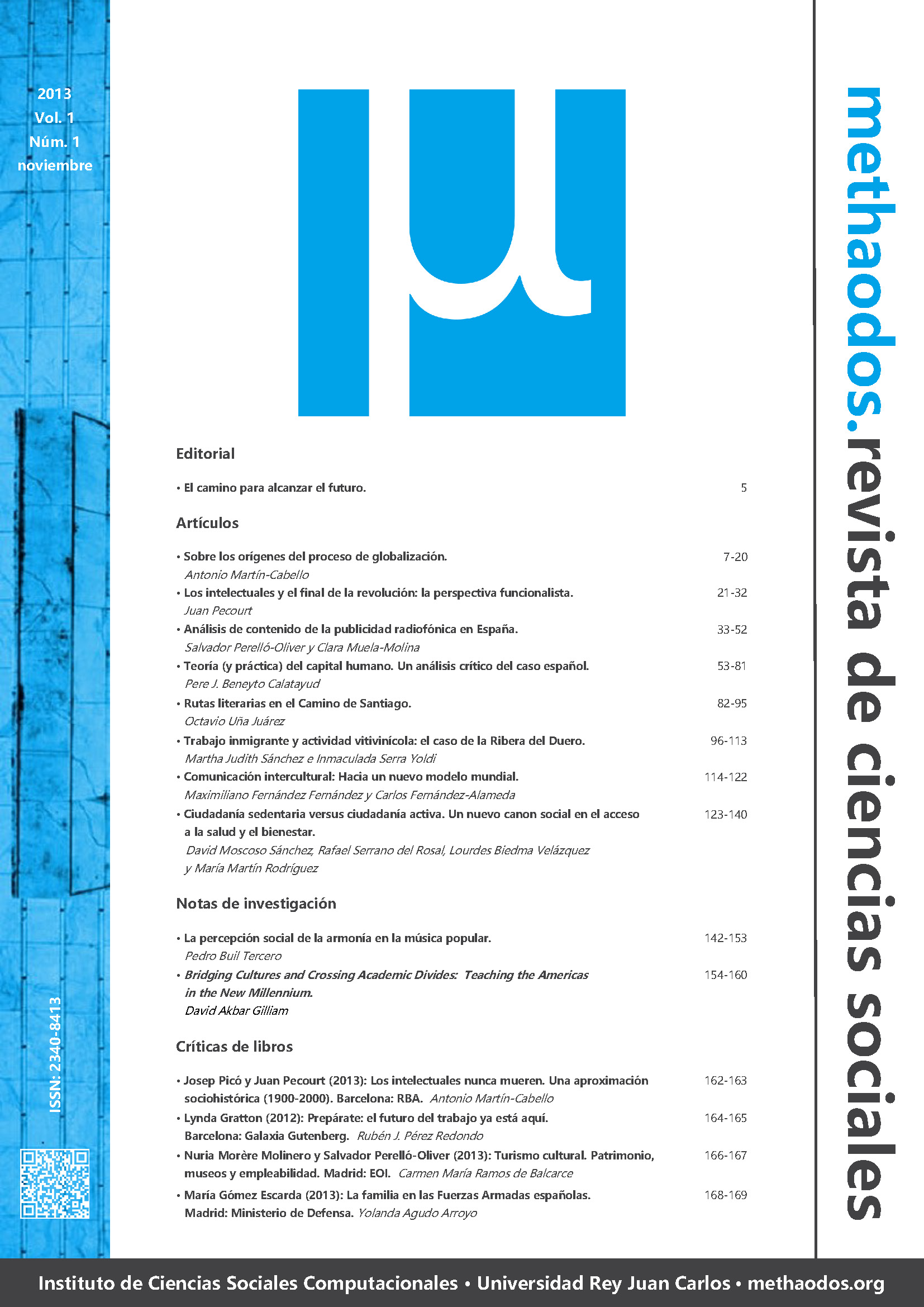Literary tours on the ‘Camino de Santiago’
Main Article Content
Abstract
This paper presents the way to Santiago as a great human accomplishment and as a construction narrated of the Spanish and European society from the Middle Ages up to late modernity. The route of Santiago has been a symbol of brotherhood European conscience. From the literary definition of trip principal ideas are checked of theoretical, philosophers, theologians and expert in literature to present as specific characteristic of the peregrination to Santiago: formation of a system of communication with own languages, a symbol of a religious order. Where the trip appears as narrated speech that presents varied realities and social situations throughout the centuries.
Downloads
Article Details
References
Alegre, J. (2004): Raíces y claves de la peregrinación jacobea. León: Gidesa.
Altolaguirre, M. (2010): El caballo griego. Reflexiones y recuerdos (1927-1958). Madrid: Voces Críticas.
Asensi, M. (2004): Peregrinatio. Barcelona: Planeta.
Bachelard, G. (1993): La poética de la ensoñación. México: Fondo de Cultura Económica.
Barthes, R. (2001): Variaciones sobre la literatura. Barcelona: Paidós.
— (2002): El susurro del lenguaje. Más allá de la palabra y la escritura. Barcelona: Paidós.
— (2009): Lo obvio y lo obtuso. Imágenes, gestos y voces. Barcelona: Paidós.
Benjamin, W. (1988): Angelus Novas. Frankfurt: Suhrkamp.
Berger, P.L. (1971): Para una teoría sociológica de la religión. Barcelona: Kairós.
— (1975): Rumor de ángeles. La sociedad moderna y el descubrimiento de lo sobrenatural. Barcelona: Herder.

